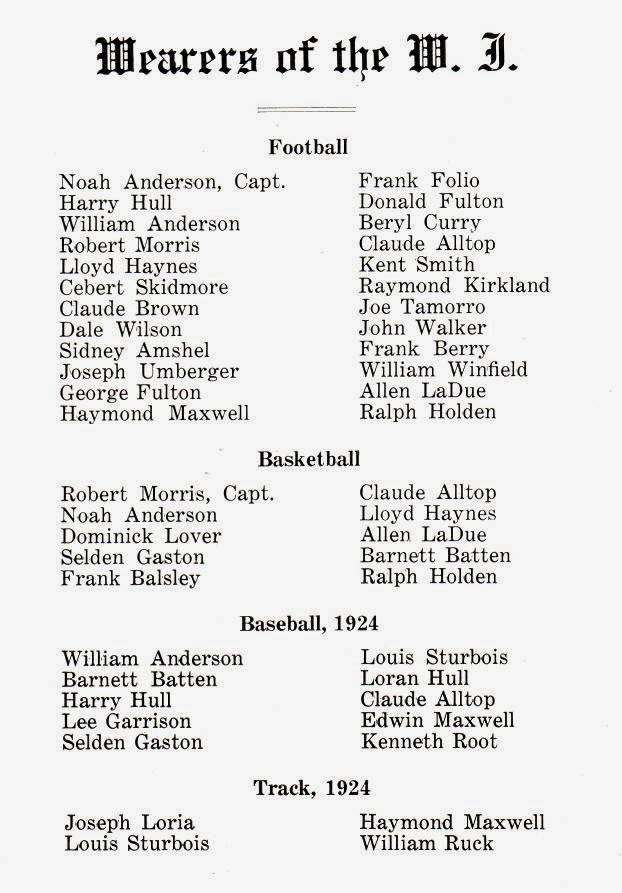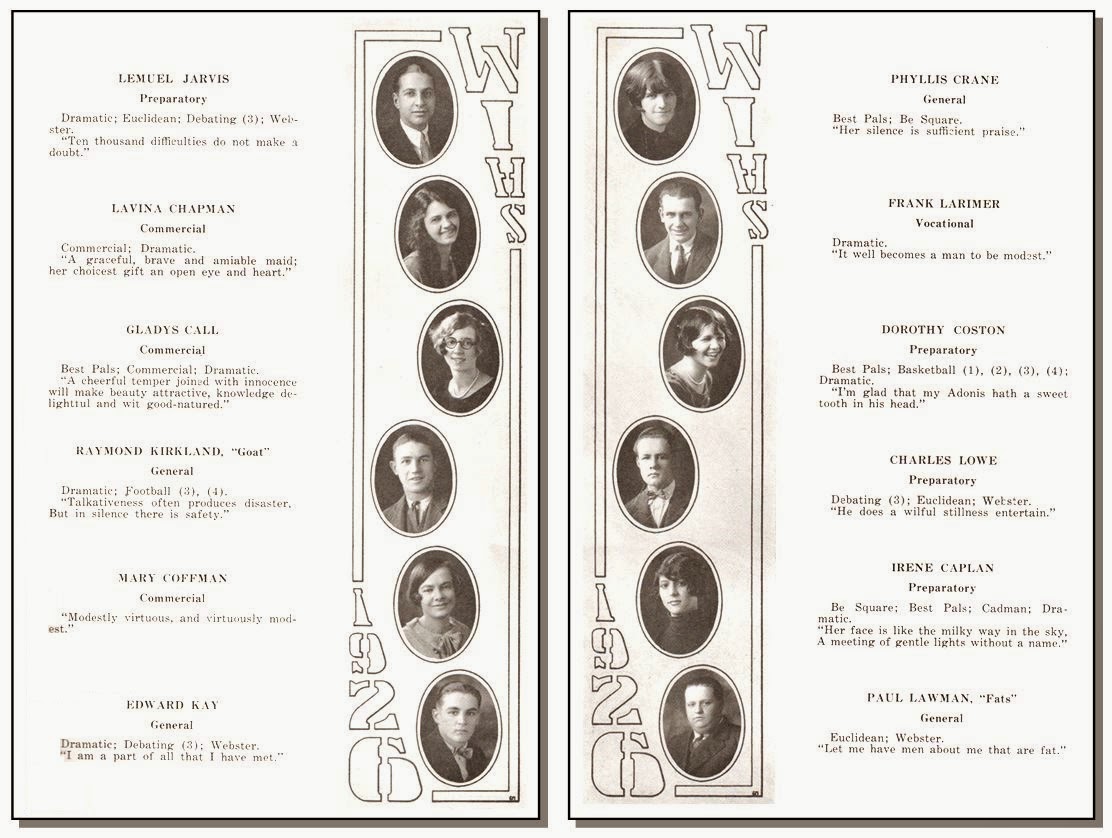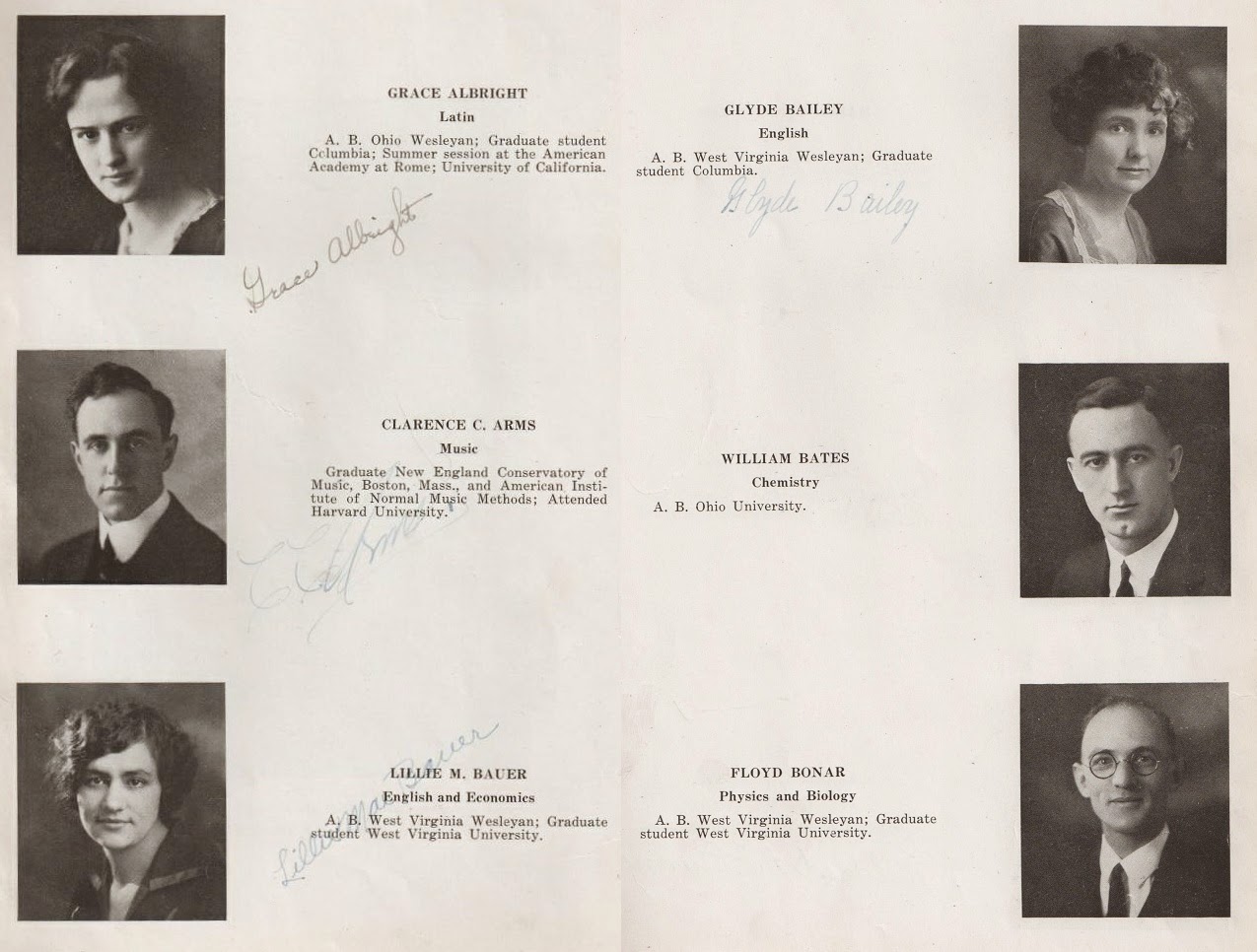Introduction
The following presentation has been created in seven segments. One segment will appear each month in the WI Newsletter to give its viewers a little insight on the events that shaped the future of Washington Irving High School from day one and throughout its eighty year history.
This presentation is not a comprehensive study into the school’s history, but it will at least give a brief outline on what took place in those years long gone.
The information and pictures are depicted in a timeline layout, making it easy to follow the school’s evolution throughout its history.
The brick structure located on Lee Avenue served as an institution for teaching high school students the value of building a sound mind and body. The school prepared its graduating students for higher learning and for life in the real world. Washington Irving High School has and always will be known for its tradition of academic perfection and having had the best educators in the country. To the many thousands, who were a part of this tradition, it was an honor and a privilege.
May the traditions and memories of Washington Irving High School live on for generations.
My deepest appreciation goes to Roleta and the WI Newsletter staff for making this presentation available to their readers. At the end of the last segment, credits and appreciation will also be given to those who took time to help with this project.
My deepest appreciation goes to Roleta and the WI Newsletter staff for making this presentation available to their readers. At the end of the last segment, credits and appreciation will also be given to those who took time to help with this project.
I trust you will enjoy these seven segments on the history of Washington Irving High School as much as I did putting them together.
WASHINGTON IRVING HIGH SCHOOL
1915 – 1995
To get the complete picture of Washington Irving's history, it is important to understand how and why the school was established in the first place.
To do this we need to go back to 1795, just 19 years after the United States gained its independence.
1795 – Randolph Academy in Clarksburg, was still part of Virginia.
1795 – Randolph Academy in Clarksburg, was still part of Virginia.
Reverend George Towers was a teacher at the academy and an Oxford graduate. After his death in 1814, the academy remained active until 1843 when the Methodist Episcopal Church acquired control and had a new building constructed on Hewes Avenue near the old Randolph Academy building.
The name of this new academy was Northwestern Virginia Academy.
On December 4, 1843, the Northwestern Virginia Academy opened for classes. Rev. Gordon Battelle was the principal here from 1843 to 1865.
In 1844, the old Randolph Academy building was demolished.
In 1854, the Northwestern Virginia Academy added a female department.
During the 1855-56 term the academy had 130 boys and 99 girls enrolled for a forty-four week session taught by five teachers.
The academy remained open until 1862, when the Union Army commandeered the building for use as a barracks, a prison, and a hospital.
On June 20, 1863 West Virginia became the 35th state in the Union.
In 1865, the last session of Northwestern Virginia Academy was taught by Rev. John Connor. During this same year, there were various new Clarksburg public schools teaching in rented rooms throughout different sections of Clarksburg.
On June 20, 1863 West Virginia became the 35th state in the Union.
When the Civil War was over in 1865, the board of trustees appointed by the Methodist Conference and township commissioners, spent around five thousand dollars to restore the building and hired a Methodist minister to serve as principal of what would be a 250 pupil facility.
Later in the same year, when the West Virginia Free Schools came into being, the Academy fell under the jurisdiction of the Clarksburg Independent School District.
In 1865, the last session of Northwestern Virginia Academy was taught by Rev. John Connor. During this same year, there were various new Clarksburg public schools teaching in rented rooms throughout different sections of Clarksburg.
1865
- There were three teachers for the first session of the Public Schools in 1865.
The first Board of Education
for Clarksburg School District in 1867, consisted of Daniel Boughner, R. T.
Lowndes and B. F. Shuttlesworth. The first
principal of the schools, Rev. John Connor, with John Blackford, and Misses
Isabella Davidson, Molly Lynn and Emily Griffin as assistants, 1866-1867.
Prior
to 1916 the following principals and superintendents have been in charge:
Julius Anderson and four teachers,
1867-1868.
Dr. William Meigs and four to six teachers,
1868-1873.
D. C. Louchery and six teachers, 1873-1878.
C. W. Lynch and eight teachers, 1878-1882.
John G. Gittings and eight to ten
teachers, 1882-1892.
L. J. Corbly Gittings and ten to
thirteen teachers, 1892-1895.
John G. Gittings and thirteen to
fourteen teachers, 1895-1997.
F. L. Burdette and fifteen to one
hundred and two teachers, 1897-1916.
1866 – The Methodist Church relinquished ownership of the academy building to the Clarksburg Board of Education and the old academy building became just another Clarksburg public school.
In 1884 – The public school was designated Clarksburg High School, a three-year school beyond the eighth grade.
Orie McConkey was the first principal of Washington Irving High School and held the position from 1914 to 1946.
1915 – The Board of Education.
The WI Class of 1916 produced the first yearbook “Reminiscences”. (1916 to 1933)
1916 - Superintendent of Schools F. L. Burdette and first Principal of WIHS Prof. Orie McConkey
1916 - Dedication to Mr. Frank Elsworth Arnett
1916 - Faculty.
1916 - Reminiscences Staff.
1916 - Class Officers.
1916 - The WI Class of 1916 had sixty-five graduating students as shown below.
1916 - Junior Class.
1916 - Sophomore Class.
1916 - Freshmen Class.
1915 - WI Baseball Team. Taken from a 1916 yearbook.
1915 – The Washington Irving High School Football Squad. Picture from a 1916 WI yearbook.
In 1915, WI’s first athletic field was located where Norwood Park is today. The players had no dressing rooms here and no means to clean up after practice. Many players rode home on trolleys after practice and this led to several complaints by the streetcar company, mainly about the mud the boys were leaving on the streetcar’s floors and seats.
1916 - WI Basketball Team. Taken from a 1916 yearbook.
1917 - Seniors.
1917 - Junior Class.
1917 - Sophomore Class.
1917 - Freshmen Class.
1917 - Canterbury Club.
1917 - WI High School Orchestra.
Baseball Team coached by Frank E. Arnett. Picture from 1917 yearbook.
1918 - Reminiscences.
1918 - Reminiscences yearbook staff.


1918 - Teachers




1918 - Class officers.
1918 Class president.

1918 - Seniors.


1918 - Junior Class.
1918 - Sophomore Class.
1918 - Freshmen Class.
1918 - 1917 WI students do patriotic work during WW I.
1917 - Baseball Team taken from a 1918 yearbook.
1917 - Football Squad taken from a 1918 yearbook.
1918 - Basketball Team.

1918 - Basketball Reserves.
1918 - The devastating influenza epidemic hampered Washington Irving’s staff and interrupted school activities. Students and staff missed as much as six weeks of the school year. It infected 500 million people across the world, including remote Pacific islands and the Arctic, and killed 50 to 100 million of them—3 to 5 percent of the world's population at the time—making it one of the deadliest natural disasters in human history.

1919 - Reminiscences.
1919 - Principal Orie McConkey.
1919 - Senior Class.
1919 - Junior Class.
1919 - Sophomore Class.
1919 - Freshmen Class.
1918 - Football Team. Picture taken from a 1919 yearbook.
1919 - Basketball Team.
1919 - WIHS's Manual Training Building. In 1922 Central Jr. High School would be built in front of this building and just to the left in this picture.
Manual Training Building shown on this side of Central Junior High School.
1920 - Reminiscences
1920 - Class Sponsors.

1920 - Teachers.
1920 - Seniors Class.
1920 - 1919 Sports.
1919 WI Football Team.
Picture taken from a 1920 yearbook.
1920 - WI Basketball Team.

1919 WI Track Team.
Picture taken from 1920 yearbook.
1921 - Reminiscences.
1921 - Yearbook Dedication.
1921 - Class Sponsor.
1921 - Teachers.
1921 - Miss Ethelyn Selby.
1921 - Seniors.
1921 - List of WI graduates.
1921 - Clubs.
Webster Debating Club.
Canterbury Club -
1921-1920 Sports.
1920 WI Football Team.
Picture taken form a 1921 yearbook.
1921 - WI Basketball Team.
Picture taken from a 1921 yearbook.
1920 - WI Baseball Team.
Picture taken from a 1921 yearbook.
1922 -
1922 - Dedication to Mr. Bragg.
1922 - Principal Orie McConkey
1922 - Teachers.
1922- Class Sponsor.
1922 - Seniors.
1922 - Juniors.
1922 - Sophomores.

1922 - Freshmen.
1922 - Coach Clay B. Hite.
1921 - Football Team. Picture taken from a 1922 yearbook.

1922 - Basketball Team.
1921 - Baseball Team. Picture taken from a 1922 yearbook.
1921 - Track Team. No team picture in the yearbook
1922 - Girls in Sports.
1922 - Clubs.
1922 - Canterbury Club.
1922 - Webster Debating Club.
1922 - Friendship Club.
1922 - Commercial Club.
1922 – Grace Albright started her career at WI in 1922 as a Latin teacher.
1890 – Students of old Clarksburg High School (all
grades). John G. Gittings was the principal of
the school in 1890.
In August of 1893, the school commissioners awarded a $14,000.00 contract to build a new high school near the existing site and the old school building was ordered to be permanently closed.
The new Clarksburg public high school opened in 1895 and was called Clarksburg High School. It would serve as a high school until 1913. Later the school would become known as Towers Elementary School.
In 1893, Orie McConkey graduated from the West Virginia Conference Seminary in Buckhannon, WV, now West Virginia Wesleyan College.
At the age of 24 Orie McConkey became principal of the Clarksburg High School located on Hewes Avenue.
1907 – Clarksburg High School Football Team.
1908 - Just a few blocks from the Clarksburg High School, the Soldier's Monument was unveiled
in front of the old courthouse at the corner of Main and South Third Streets. I believe it has been moved three time since this picture was taken on May 30, 1908.
The history of Washington Irving High School begins.
In 1912 - A bond issue was passed by the citizens of Clarksburg Independent District, in order to build a new high school on the site of the old Parr Mansion located on Lee Avenue. The bond issue raised $200,000.00.
William Ittner was hired in November 1912 as the architect to design the new high school.
Below is a picture of the Parr Mansion on Lee Avenue.
Below is a picture of the Parr Mansion on Lee Avenue.
1914 - A dedication was held in the new school's auditorium.
1914 - Mr. McConkey and twenty faculty members, plus the high school student body, transferred from the old Clarksburg High School on Hewes Avenue to the new high school on Lee Avenue.
The high school students included grades 7 through 12.
1914 - Professor Orie McConkey became the first principal of the new Clarksburg High School on Lee Avenue.
1914 - During the remainder of the first school year, the school was called "Clarksburg High School," but in 1915 it became known by a name we all hold dear: “WASHINGTON IRVING HIGH SCHOOL”
Orie McConkey was the first principal of Washington Irving High School and held the position from 1914 to 1946.
Mr. McConkey enforced rules and maintained discipline during school hours…..
Girls and boys used different steps inside the school. He designated the east steps for the girls and the west steps for the boys.
He designated separate locker rooms for girls and boys.
He designated separate study halls for the girls and boys.
If students brought a bagged lunch to school, girls and boys used separate eating rooms.
He enforced the rule of no dancing in the school at any time. Not even a Shakespearean dance in a school program was permitted.
I just can’t help but wonder… when did Orie McConkey’s rules on dancing in school get changed? This next picture was taken in late 1950's.
So how did Washington Irving High School get its name?
Mildred Anna F. Dunn was called “Miss Anna” by many of her students. She taught English and civics at the new school on the hill. She admired the author Washington Irving mainly because he had been “a courteous, scholarly, and intelligent man" and she hoped students at the new school would follow his example. She made a suggestion to change the school's name to Washington Irving.
In 1915, the superintendent of schools accepted Mildred Dunn’s suggestion to change the school’s name from Clarksburg High School to Washington Irving High School.
Washington Irving would become a very proud name for those who had the privilege of attending there.
Mildred Dunn taught at the new high school located on Lee Avenue, from the day it first opened in 1914. She continued to teach there under the new school's name (Washington Irving High School) until 1934.
Pictured below is a bust of Washington Irving. Which is actually the one Mildred Dunn presented to Washington Irving High School as a gift of her love for the school.
Do you know what happened to this bust in 1985? If you don't, I'll give you the whole story later on in segment seven.
Washington Irving High School during its early years.
The first graduating class was the WI Class of 1915. It consisted of only forty-seven graduating students.
The class held a drawing to see who would receive the first diploma. The winner was Margaret Dailey.
In 1915, the Webster Debating Club for boys was organized to promote general improvement in debate.
In 1915, the girls organized the Canterbury Club to acquire better speaking skills.
Although there was no 1915 WIHS yearbook published, the class picture is available.
Although there was no 1915 WIHS yearbook published, the class picture is available.
1915 – The Board of Education.
The WI Class of 1916 produced the first yearbook “Reminiscences”. (1916 to 1933)
1916 - Superintendent of Schools F. L. Burdette and first Principal of WIHS Prof. Orie McConkey
1916 - Dedication to Mr. Frank Elsworth Arnett
1916 - Faculty.
1916 - Reminiscences Staff.
1916 - Class Officers.
1916 - The WI Class of 1916 had sixty-five graduating students as shown below.
1916 - Junior Class.
1916 - Sophomore Class.
1916 - Freshmen Class.
1915 - WI Baseball Team. Taken from a 1916 yearbook.
1915 – The Washington Irving High School Football Squad. Picture from a 1916 WI yearbook.
In 1915, WI’s first athletic field was located where Norwood Park is today. The players had no dressing rooms here and no means to clean up after practice. Many players rode home on trolleys after practice and this led to several complaints by the streetcar company, mainly about the mud the boys were leaving on the streetcar’s floors and seats.
1916 - WI Basketball Team. Taken from a 1916 yearbook.
In 1916, Washington Irving’s football coach was Frank E. Arnett. He was also a geometry teacher at the time.
1916 - Washington Irving's Baseball Team was also coached by Frank E. Arnett. Picture from a 1917 yearbook.
1916 - Washington Irving's Baseball Team was also coached by Frank E. Arnett. Picture from a 1917 yearbook.
1917 -
1917 - Seniors.
1917 - Junior Class.
1917 - Sophomore Class.
1917 - Freshmen Class.
In 1917, Alice Griffin became the first librarian at Washington Irving High School.
She served in that position for forty-one years.
Clayce Kishbaugh came along to become an assistant librarian and then became the head librarian herself after Miss Griffin's retirement.
1917 - Webster Debating Club.
1917 - Webster Debating Club.
1917 - Canterbury Club.
1917 - WI High School Orchestra.
Baseball Team coached by Frank E. Arnett. Picture from 1917 yearbook.
Football Team 1916 in a 1917 yearbook.
1917 - WI Basketball Team.
1917 - Basketball Reserve Team.
1918 - Reminiscences.
1918 - Reminiscences yearbook staff.


1918 - Teachers




1918 - Class officers.
1918 Class president.

1918 - Seniors.


1918 - Junior Class.
1918 - Sophomore Class.
1918 - Freshmen Class.
1918 - 1917 WI students do patriotic work during WW I.
1917 - Baseball Team taken from a 1918 yearbook.
1917 - Football Squad taken from a 1918 yearbook.
1918 - Basketball Team.

1918 - Basketball Reserves.
1918 - The devastating influenza epidemic hampered Washington Irving’s staff and interrupted school activities. Students and staff missed as much as six weeks of the school year. It infected 500 million people across the world, including remote Pacific islands and the Arctic, and killed 50 to 100 million of them—3 to 5 percent of the world's population at the time—making it one of the deadliest natural disasters in human history.
1918 – List of WI graduates.
1918 - On November 11, 1918 World War I had came to an end.

1919 - Reminiscences.
1919 - Principal Orie McConkey.
1919 - Senior Class.
1919 - Junior Class.
1919 - Sophomore Class.
1919 - Freshmen Class.
1918 - Football Team. Picture taken from a 1919 yearbook.
1919 - Basketball Team.
| 1919 - List of WI graduates. |
1919 - WIHS's Manual Training Building. In 1922 Central Jr. High School would be built in front of this building and just to the left in this picture.
Manual Training Building shown on this side of Central Junior High School.
1920 - Reminiscences
1920 - Class Sponsors.

1920 - Teachers.
1920 - Seniors Class.
1920 - 1919 Sports.
1919 WI Football Team.
Picture taken from a 1920 yearbook.
1920 - WI Basketball Team.

1919 WI Track Team.
Picture taken from 1920 yearbook.
1921 - Reminiscences.
1921 - Yearbook Dedication.
1921 - Class Sponsor.
1921 - Teachers.
1921 - Miss Ethelyn Selby.
1921 - List of WI graduates.
1921 - Clubs.
Webster Debating Club.
Canterbury Club -
1921-1920 Sports.
1920 WI Football Team.
Picture taken form a 1921 yearbook.
1921 - WI Basketball Team.
Picture taken from a 1921 yearbook.
1920 - WI Baseball Team.
Picture taken from a 1921 yearbook.
1922 -
1922 - Dedication to Mr. Bragg.
1922 - Principal Orie McConkey
1922 - Teachers.
1922- Class Sponsor.
1922 - Seniors.
1922 - Juniors.
1922 - Sophomores.

1922 - Freshmen.
1922 - Coach Clay B. Hite.
1921 - Football Team. Picture taken from a 1922 yearbook.

1922 - Basketball Team.
1921 - Baseball Team. Picture taken from a 1922 yearbook.
1921 - Track Team. No team picture in the yearbook
1922 - Girls in Sports.
1922 - Clubs.
1922 - Canterbury Club.
1922 - Webster Debating Club.
1922 - Friendship Club.
1922 - Commercial Club.
1922 - List of WI graduates.
1922 – Lillian C. Moore taught Domestic Science from 1922 to 1954.
She remained in her position until 1958.
In 1922, Central Junior High School opened next to Towers Grade School. This new school would accommodate the 7th and 8th grade classes that had been attending Washington Irving High School since 1914.
1923 -
1923 - Reminiscences Staff.
1923 - Class Sponsors.
1923 - Miss Ethelyn Selby started teaching at WIHS in 1923. She would later marry and have a son by the name of Charles Madison Ferrell who graduated from WI in 1946.
1923 - Pearl Custer graduated with the Washington Irving Class of 1923. She would later become the school’s secretary.
1923 - Seniors.
1923 – The Washington Irving Be Square Club was organized this year.
The club remained active until 1984.
1923 - Canterbury Club.
1923 - Cadman Choral Club.
1923 - Glee Club.
1923 - High school orchestra.
1923 - 1922 WI Sports.
Clay B. Hite’s 1922 WI football team was the High School Champions of West Virginia after the 12-6 defeat of Huntington High School.
The football players....
1922 - Baseball Team. Picture taken from a 1923 yearbook.

1922 - Track Team. From the pages of a 1923 yearbook.
1923 - Basketball Team.

1923 - Carmichael Auditorium opened and became the scene for all WI home basketball games.
1923 - Reminiscences Staff.
1923 - Class Sponsors.
1923 – Florence K. Hollins started her teaching career at Washington Irving in 1923. She taught Commercial Branches until 1965.
1923 - Miss Ethelyn Selby started teaching at WIHS in 1923. She would later marry and have a son by the name of Charles Madison Ferrell who graduated from WI in 1946.
1923 - Pearl Custer graduated with the Washington Irving Class of 1923. She would later become the school’s secretary.
Note that Pearl Custer was a student in the Heavner-Pantall Class.
1923 - Seniors.
1923 – The Washington Irving Be Square Club was organized this year.
The club remained active until 1984.
1923 - Canterbury Club.
1923 - Cadman Choral Club.
1923 - Glee Club.
1923 - High school orchestra.
1923 - 1922 WI Sports.
1923 - Coach Clay B. Hite.
Clay B. Hite’s 1922 WI football team was the High School Champions of West Virginia after the 12-6 defeat of Huntington High School.
The football players....
1922 - Baseball Team. Picture taken from a 1923 yearbook.

1922 - Track Team. From the pages of a 1923 yearbook.
1923 - Basketball Team.

1923 - Carmichael Auditorium opened and became the scene for all WI home basketball games.
1924 -
1924 - Class Sponsors.
1924 - Teachers.
1924 - Seniors.
1924 – Washington Irving Freshmen boys.
1924 – Washington Irving Freshmen girls.
1924 – List of boys names in the WI Freshmen Class.
1924 – The Washington Irving High School Band played for John W. Davis when he returned home to Clarksburg to accept his nomination as the Democratic candidate for president in 1924.
1924 – WI Girls Basketball Team.
1924 – Alice R. Griffin was still librarian at Washington Irving High School.
1924 – Emily Taylor started teaching English classes at Washington Irving High School.
Through the years, she taught sophomore and junior English. She also organized and was a sponsor of the Art Appreciation Club.
1924 – J. E. Gudekunst began teaching mathematics at Washington Irving High School.
He taught algebra and geometry. He was an educator at WI from 1924 to 1964.
In 1924, Lillie Mae Bauer began here teaching career at WI. She taught English, Economics, Spanish and History from 1924 to 1966.
1923 - Track Team. Picture taken from a 1924 yearbook.
1923 - WI Football team coached by Clay B. Hite.
Picture taken from a 1924 yearbook.
1923 - Picture taken from a 1924 yearbook.
Dedication to Miss Myrtle Hayes.
The desk-markers get a lecture.
1925 - Seniors.
1925 - Juniors.
1925- Sophomores.
1925- Freshmen Girls.
1925- Freshmen Boys.
1925 - Clubs.
1925 - Be Square Club.
1925 - Domestic training.
1925 - Music Departments.
1925 - Sports.
1925 - Girls in Sports.
1926 Class Sponsors.
1926 Teachers.
1926 to 2014
1926 - Seniors
1926 Club Directory.
1926 WI State Champions in football coached by Clay B. Hite. Picture was taken from a 1927 yearbook.
Tony Folio is pictured in the second row above, second from the left.
In 1926 Tony Folio started as a scrub, but ardently wanted a new uniform. He worked hard and just after a few games, he was playing first string.
Tony Folio was a freshmen in 1926. The following was taken from a 1926 yearbook.
Below are the football players that lettered in the 1926 season. Taken from a 1927 yearbook.
The WI basketball squad had a successful season in 1926, winning 12 of their 16 games. Coach Hite had substitutes whose work was almost on a par with that of the regulars.
South Chestnut Street can be seen in the lower left corner of this photo. The West Fork River is shown at the top and Monticello Elementary School is shown in the top left of this photo.
1926 – Freshmen girls volley ball team at Washington Irving High School.
In the fall of 1926, a series of games were played in an interclass tournament. It was a great day for the WI Freshmen girls when they won the tournament by defeating the Senior girls, in a closely contested final match.
The year was 1927
Sponsors of the Class of 1927 were.....
1927 - Teachers.
In 1927, Mr. Gudekunst founded the Hi-Y for boys to emphasize clean living and to support WI athletics.
From her spelling of the words “fresh man”, I wonder what she really meant by this message. I guess I’ll never know.
Maud Yoak perhaps had a way with words, but she didn’t hesitate to voice her opinion about matters she didn’t like either.
For example, she didn’t like the Washington Irving alma mater used at WI during early 1930’s and strongly express her opinion about it.
1927 - Varsity Football Team. Tony Folio is in the center of the second row. Picture from a 1928 yearbook.


If you wish to have any pictures added to this or any of the following six segments, just email them to me and I will see that you get credit. Remember, this project is for all of us to enjoy.
If each of us give a little, just think what a collection of history we will have put together.
Tim Cork tpcork@bellsouth.net
In 1924, Yvonne Tiennebrunne also began her teaching career at Washington Irving High School.
She taught French and Spanish from 1924 to 1966.
1924 – The Chemistry Society was a new organization at WI this year and was under the supervision of William Bates.
1923 – Washington Irving Track Team coached by Clay B. Hite. Picture taken from a 1924 yearbook.
1923 - Track Team. Picture taken from a 1924 yearbook.
1923 – 1924 Washington Irving Basketball team with Coach Clay B. Hite. Picture taken from a 1924 yearbook.
1923 – Washington Irving Baseball Team with Coach Clay B. Hite. Picture taken from a 1924 yearbook.
1923 - WI Football team coached by Clay B. Hite.
Picture taken from a 1924 yearbook.
1923 - Picture taken from a 1924 yearbook.
1925 - Reminiscences.
Dedication to Miss Myrtle Hayes.
1925 - Reminiscences Staff
1925- Teachers.
The desk-markers get a lecture.
1925 - Class Sponsors.
1925 - Seniors.
1925 - Juniors.
1925- Sophomores.
1925- Freshmen Girls.
1925- Freshmen Boys.
1925 - Clubs.
1925 - Be Square Club.
1925 - Domestic training.
1925 - Music Departments.
1925 - Sports.
1925 - Girls in Sports.
The Year was 1926
1926 Class Sponsors.
1926 Teachers.
1926 to 2014
1926 - Seniors
1926 Club Directory.
1926 WI State Champions in football coached by Clay B. Hite. Picture was taken from a 1927 yearbook.
In 1926 Tony Folio started as a scrub, but ardently wanted a new uniform. He worked hard and just after a few games, he was playing first string.
Tony Folio was a freshmen in 1926. The following was taken from a 1926 yearbook.
Below are the football players that lettered in the 1926 season. Taken from a 1927 yearbook.
There will be more on Tony Folio in the next segment.
1926 – Washington Irving basketball team.
The WI basketball squad had a successful season in 1926, winning 12 of their 16 games. Coach Hite had substitutes whose work was almost on a par with that of the regulars.
1926 – Hite Field
W.I.'s new athletic field near South Chestnut Street (Hite Field) became the setting for sports events in 1926.
W.I.'s new athletic field near South Chestnut Street (Hite Field) became the setting for sports events in 1926.
South Chestnut Street can be seen in the lower left corner of this photo. The West Fork River is shown at the top and Monticello Elementary School is shown in the top left of this photo.
1926 – This is a view of Hite Field that year.
1926 – Miss Clyde Bailey started teaching at WI in 1926. She taught English until 1964.
1926 – Girls champion tennis players, one girl from each Washington Irving High School class.
1926 – Freshmen girls volley ball team at Washington Irving High School.
In the fall of 1926, a series of games were played in an interclass tournament. It was a great day for the WI Freshmen girls when they won the tournament by defeating the Senior girls, in a closely contested final match.
1926 WI Junior Class Below is my dad Wilbur Ellsworth Cork Jr.
The year was 1927
Sponsors of the Class of 1927 were.....
1927 - Teachers.
1927 – The girl’s Washington Irving basketball team.
1927 – Washington Irving Webster Debating Club.
1927 – Washington Irving Hilltop Staff.
1927 – Washington Irving Spanish Club.
Coach Clay Bramer Hite designed the distinctive WI logo that was proudly displayed on banners, uniform, sweaters and jackets.
In 1927, my dad Wilbur Ellsworth Cork Jr. proudly wore these letters. He lettered in track and field and had two nicknames, Corky and High Hurdles”.
1927 – WI had a number of firsts this year.
In 1927, Georgia Flory became the first female elected vice president of the Senior Class. She was also the first WI graduate to return to her alma mater as a teacher.In 1927, Mr. Gudekunst founded the Hi-Y for boys to emphasize clean living and to support WI athletics.
1927 – The Class of 1927 was the first graduating class to wear caps and gowns for commencement.
1927 was the first senior play “The Romancers”. My dad Wilbur Cork played the role of Bergamin in the play.
1927 – The Washington Irving Dramatic Club, an organization of seniors and juniors who were taking English IV, presented three plays.
“The Monkey’s Paw”, “Moonshine” and “Spreading the News”.
1927 – Maud Yoak signed my dad’s 1927 yearbook with this message:
“Don’t forget the time “a” fresh man got spanked.”From her spelling of the words “fresh man”, I wonder what she really meant by this message. I guess I’ll never know.
Maud Yoak perhaps had a way with words, but she didn’t hesitate to voice her opinion about matters she didn’t like either.
For example, she didn’t like the Washington Irving alma mater used at WI during early 1930’s and strongly express her opinion about it.
1927 - Varsity Football Team. Tony Folio is in the center of the second row. Picture from a 1928 yearbook.

1927 - Track Team coached by Clay B. Hite. My dad, Wilbur Cork Jr., is in the second row, fourth from the left.
By 1927, ivy was climbing the brick walls outside of Washington Irving High School.

If you wish to have any pictures added to this or any of the following six segments, just email them to me and I will see that you get credit. Remember, this project is for all of us to enjoy.
If each of us give a little, just think what a collection of history we will have put together.
Tim Cork tpcork@bellsouth.net






























































































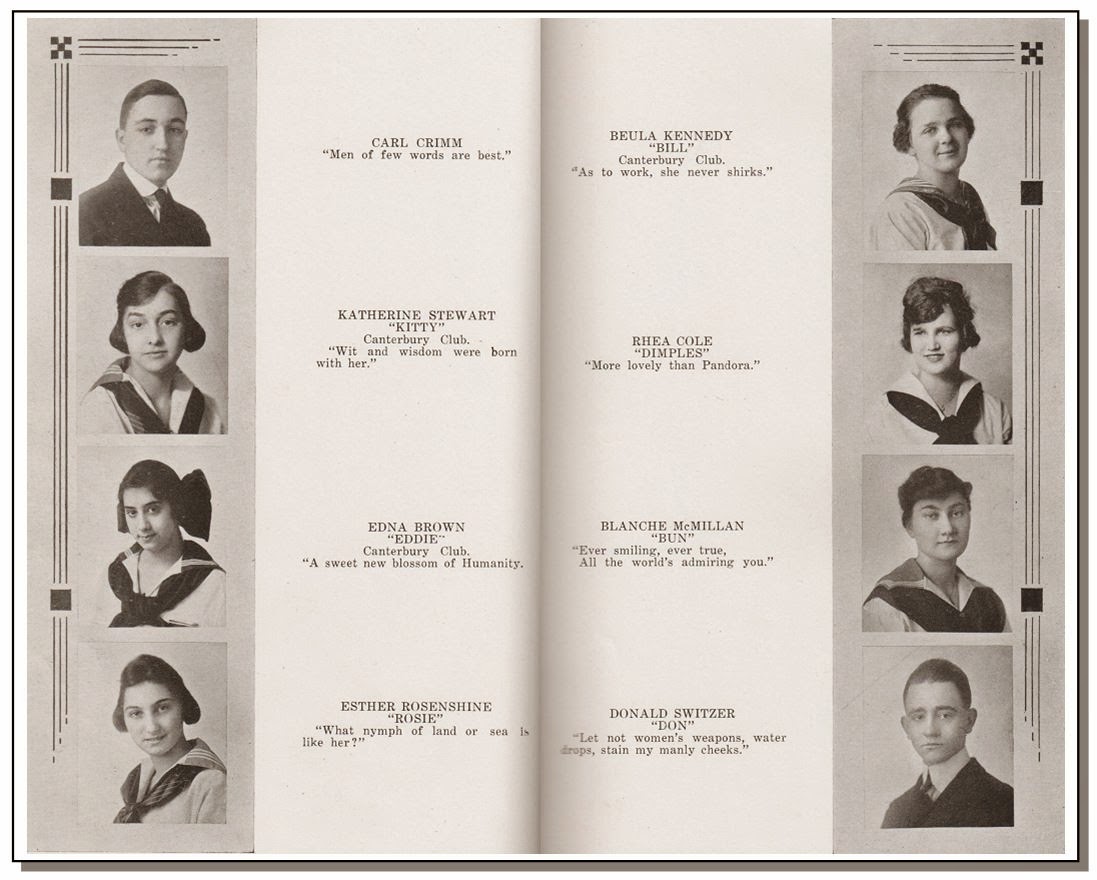



















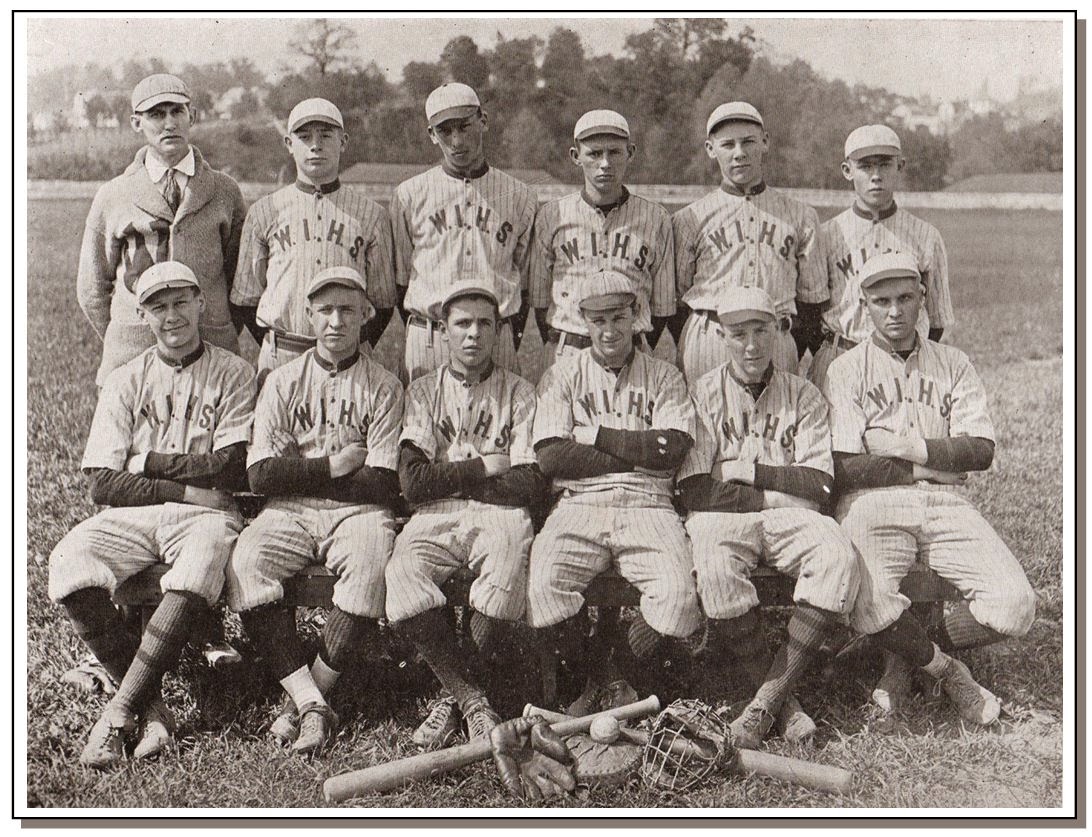



























































































































.jpg)




























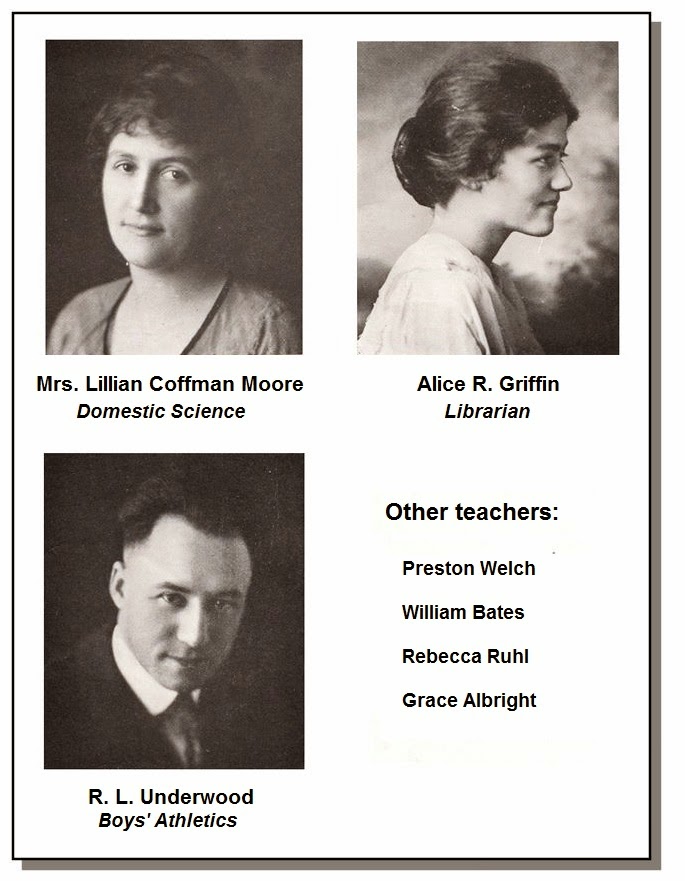




















































































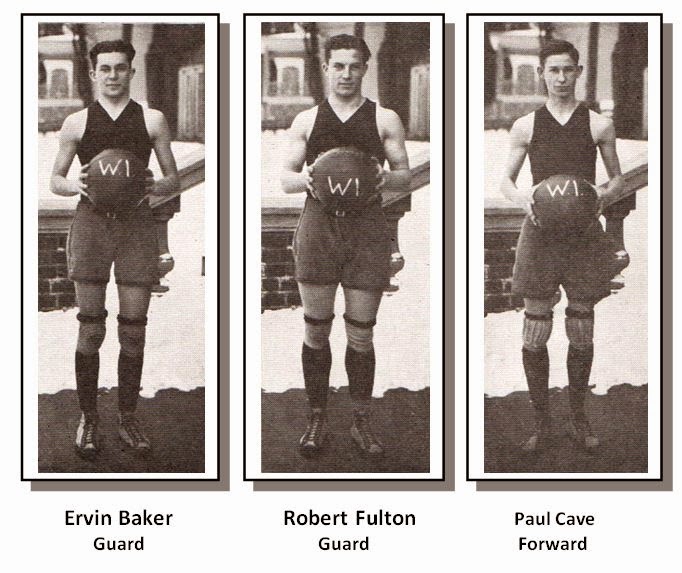
























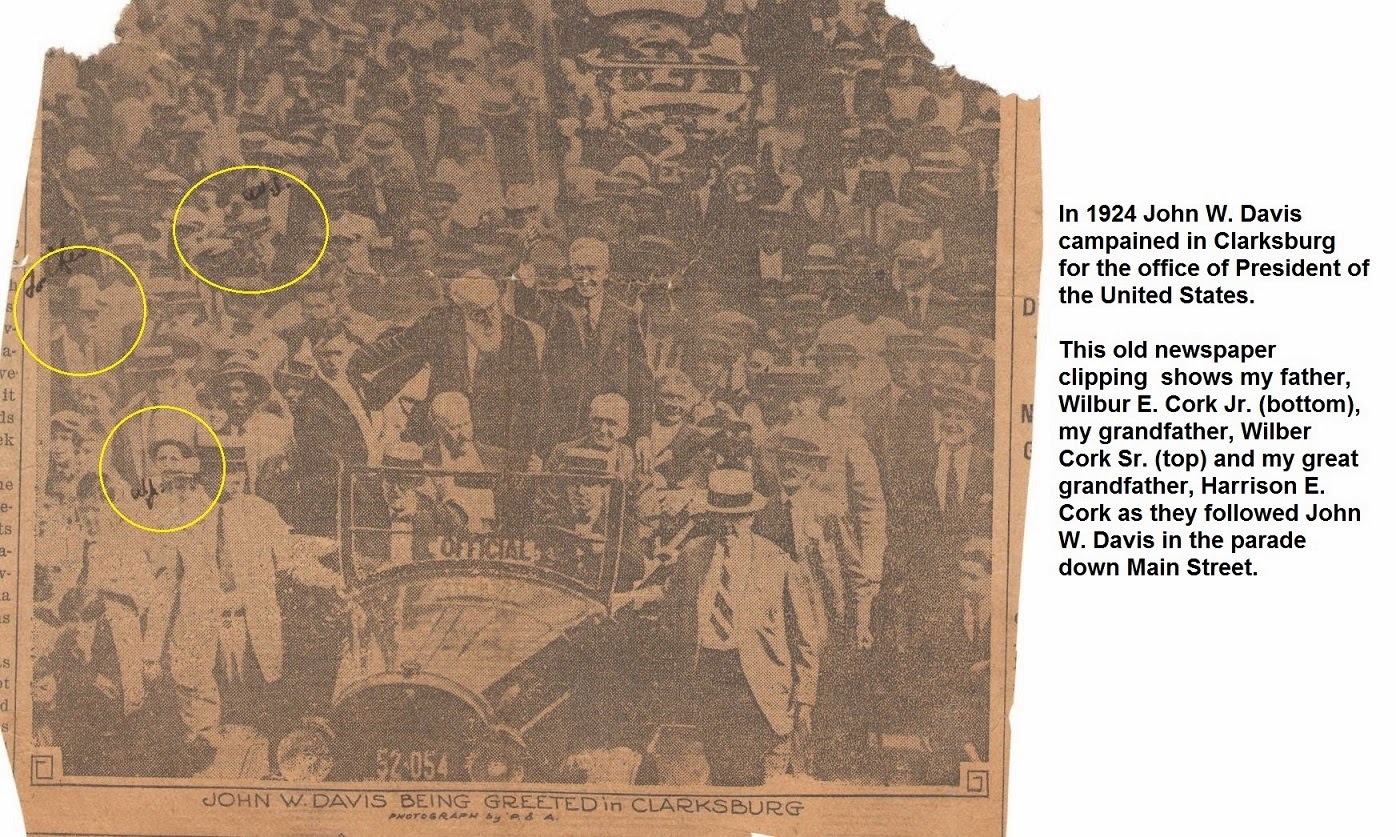





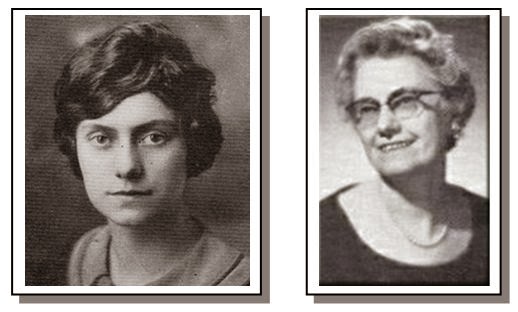
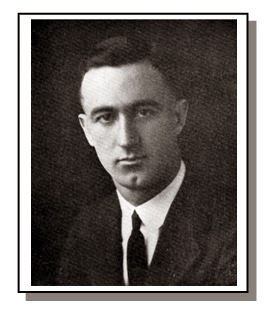
















.jpg)










































